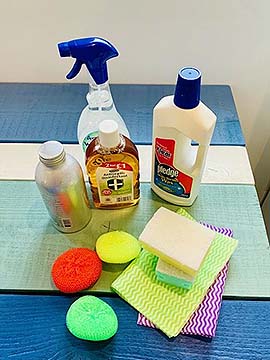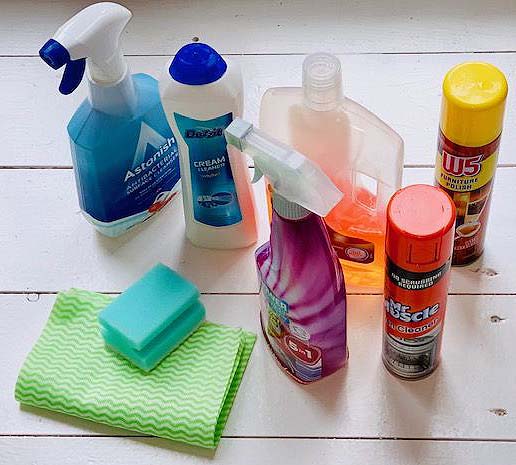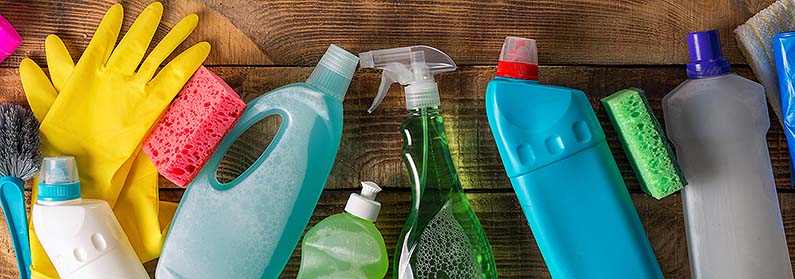Recent reports and surveys have suggested that millions of people are now “allergic to their own homes” and suffering from so-called “household allergies” or “indoor allergies”, with some experts now distinguishing between “hay fever” and “home fever”.
Regular hay fever is seasonal and triggered by high pollen levels (e.g. grass, tree and shrub pollens), while “home fever” is described as occurring throughout all seasons and being triggered by allergens like dust mites, mould, cleaning products and pets present at home or at work.
The symptoms of “home fever” are similar to the reactions caused by hay fever and may include sneezing, a runny or blocked nose and itchy or watery eyes. If the allergy sufferer also has asthma, additional problems, such as shortness of breath, tightness in the chest, wheezing and coughing can occur.
Allergies and asthma often occur together, the same substances that trigger the allergy may also cause asthma symptoms, alternatively, certain allergies can cause asthma symptoms (allergy-induced asthma).
Allergies can be caused by pets and mould spores but the most common cause for home fever/household allergies are house dust mites (allergic rhinitis). Dust mite allergy can also trigger asthma and cause eczema to flare.
Dust mites (also called bed mites) are tiny microscopic creatures (spiderlike arachnids) who thrive in warm and humid places and multiply quickly and easily, particularly, during the summer months.
They live in the dust that builds up in carpets, rugs, upholstered furniture, curtains, cushions, pillows, bedding, mattresses, blankets, pet beddings and soft toys – with beds being their ideal environment as they like to feed on the flakes of skin shed by humans (and pets). Generally, allergy sufferers find that their symptoms are worse in the bedroom.
Dust mites do not bite or spread disease and many people are unaffected by them, however, many others experience an allergic reaction to mites or to their droppings which can collect in beds, mattresses, quilts, pillows, carpets, rugs, etc. Pets (e.g. dogs and cats) may also suffer from house mite allergy.
As dust mites are so tiny, they float into the air when a fabric is disturbed, a carpet or rug is walked on or when a hoover is used. It is when they float in the air (airborne allergens) that the dust mite droppings and pieces of dead dust mites most aggravate allergies or even cause asthma.
There is much debate and disagreement among medical experts and household specialists as to what can be done to (i) reduce the amount of dust and dust mites in households and, if anything can be done at all, and (ii) prevent or reduce related allergy and/or asthma flare ups.

Among others, the following steps may assist you in controlling and/or reducing the amount of dust mites in your house or flat and in reclaiming the sanctuary of your home:
- Cleanliness and Tidiness It is stating the obvious but make sure to keep your home clean and tidy! Clean, dust, wipe, polish and hoover frequently. Declutter your home regularly. Keep surfaces and floors clean and uncluttered. Hoover multiple times a week. Consider investing in a vacuum cleaner with HEPA filters which remove very small particles of dust, mould and bacteria and, thereby prevent allergens from circulating in the air. Dust regularly by removing heavy dust from ceiling and floor with a soft-brush hoover attachment and then use a damp duster or damp microfibre cloth to wipe the surface. Generally, use damp cloths first and, only then, use dry cloths. Mop your floors at least weekly. Do not forget to remove dust from hidden spots and corners.
- Smoking Do not smoke indoors. Smoke is one of the most common air pollutants in homes. Not only is the air pollution caused by second-hand smoke a risk but, in addition, smoke settles in carpets, curtains, furniture etc (“third-hand smoke”). This, together with dust and other contaminants, causes a toxic mix inside your home, on surfaces, furniture, curtains, carpets and soft furnishings.
- Beds Change your bed linen frequently (e.g. weekly) and wash at the hottest temperature possible (check wash label) and, then, put in a hot tumble dryer (check wash label) to kill dust mites. Wash blankets weekly at hottest temperature possible (check wash label). Buy linen and blankets that can withstand frequent washing at high temperatures. Consider changing pillow cases daily, if necessary, as they touch your face, eyes, mouth and nose. Consider using allergen-proof barrier covers on all mattresses, duvets and pillows and then wash them frequently, at least monthly. Replace mattresses every 7 to 10 years and consider replacing pillows and duvets at least every 1 to 2 years. Remember dust mites live, die and reproduce in your bed.
- Carpets and rugs Consider removing carpets and rugs, for example, in the bedroom. Tile, hardwood, bamboo or cork floors etc are easy to clean and, likely, more suitable for allergy sufferers. You could also consider hypoallergenic rugs and carpets. Use a high-temperature steam cleaner to remove dust mites from carpets and rugs. Hoover carpets and rugs multiple times a week.
- Upholstered furniture Vacuum all surfaces of upholstered furniture (e.g. sofas) at least twice a week. Remove covers of upholstered furniture and wash frequently (check wash labels). Opt for furniture with removable washable covers or choose leather/vinyl over fabrics as they are easier to clean.
- Curtains/blinds Consider replacing curtains and plastic or wooden blinds with washable blinds and wash them frequently. Consider buying anti allergen blinds. If you prefer curtains, use washable cotton curtains and wash them frequently.
- Soft furnishings and decorations Remove any unnecessary soft furnishings and decorations, especially decorations which are tricky to clean, in particular, from bedrooms. Wash your soft furnishings frequently at the hottest temperature possible (check wash label) and clean your decorations from dust regularly.
- Soft toys Wash your children’s stuffed toys frequently at the hottest temperature possible (check wash label). If the toy cannot be washed at high temperature, place it in a plastic bag and put it in the freezer for a minimum of 12 hours once a month. If possible, buy washable stuffed toys.
- Fabric allergen sanitizer vacuum? Carry out research on fabric allergen sanitizer vacuums (which use ultraviolet light to kill dust mites and bacteria and a filtration system to remove dust mite allergens, pollen etc from fabrics) to see whether they could be a helpful option for you.
- Air purifier? Carry out research on air purifiers (which use a system of internal fans to pull air through a series of filters that remove harmful airborne particles like dust, pollen and bacteria and circulate purified air back into the room) to see whether they could be a helpful option for you.
- Ioniser? Carry out research on ionisers or negative ion generators (which create a static charge around harmful airborne particles like dust, pollen and bacteria and cause the particles charged with static to stick to the nearest surface) to see whether they could be a helpful option for you.
- Dehumidifier? Prevent humidity by ensuring appropriate ventilation and use extractor fans in bathrooms and kitchen. If necessary, use an indoor dehumidifier. Between 30 and 50 percent is the ideal range in which the air is moist enough for easy breathing, but dry enough to not feel oppressive. Use a hygrometer to keep track of the relative humidity in your bedroom.
We hope you have found the above considerations with respect to removing allergy (and asthma) triggers from your home helpful. In summary, clean, tidy, dust, wipe, mop and vacuum frequently to ensure a healthy home environment and to reduce and control the dust and air pollution in your home.
Do you need a cleaning fairy to help ensure your home is a clean, tidy, healthy and stress-free zone where you can chill and relax?
Contact us to today to book your magic cleaning fairy! Zauberfee – Let the cleaning fairies flutter away the dust!

Zauberfee Cleaning Services Limited – making homes sparkle!


